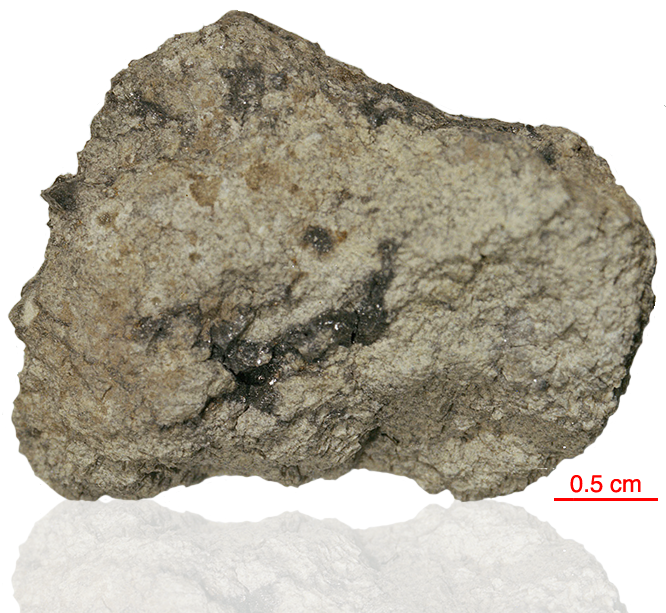
Fact sheet
60626 is a highly aluminous impact melt rock that was collected as a rake sample near the Lunar Module. It has a poikilitic texture, but the plagioclase chadocrysts have indistinct boundaries. In appearance and in composition, this rake sample is different from other impact melt rocks. Its fine grain-size make positive identification of the constituent minerals problematic although considerable plagioclase feldspar and minor olivine can be discerned. Only one small crystal of metallic iron was observed.
The sample weighed 15.9 grams before analysis and has not been dated.
Further details of this and other Apollo samples are here: http://curator.jsc.nasa.gov/lunar/
Our thin section image shows a sequence of numbers (1-3) that have been scribed on the glass behind the three rock fragments.
The Apollo 16 landing site was in the hilly region around Descartes crater in the lunar highlands. The landing spot was chosen to allow the astronauts to gather geologically older lunar material (Descartes Formation and the Cayley Formation) than the samples obtained in the first four landings, which were in or near lunar maria.
The mission lasted 11.1 days, with a stay on the lunar surface of 71 hours. The crew were on the lunar surface for 20.2 hours during which they traversed approximately 27 kilometers and collected approximately 96 kilograms of samples.
Apollo 16 was launched on 16 April 1972.






